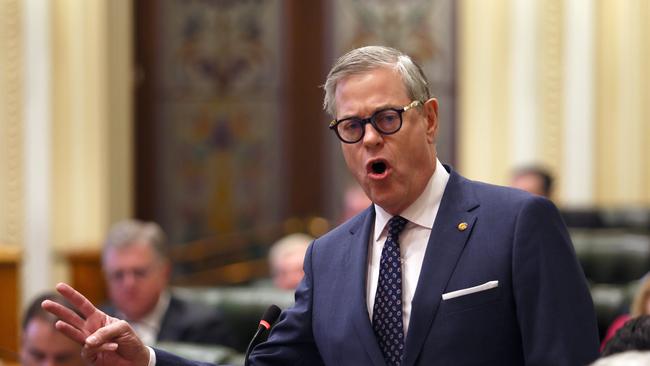Dr Nick Yim, aims to hold governments accountable in his second term as president for Australian Medical Association Queensland
Queensland’s peak medical body is calling on the state government to deliver a long-term workforce plan to tackle critical doctor shortages in rural and regional areas, warning current conditions are unsustainable.

Cairns
Don't miss out on the headlines from Cairns. Followed categories will be added to My News.
Queensland’s peak medical body is calling on the state government to deliver a long-term workforce plan to tackle critical doctor shortages in rural and regional areas, warning current conditions are unsustainable.
Australian Medical Association Queensland re-elected president Dr Nick Yim said any solution must include expanding specialist training in the regions and prioritising rural applicants in selection processes.
“Until we train enough doctors, the state government needs to boost incentives to bring more clinicians to key areas of need,” he said.
“We need practical solutions to get the right people to the places they’re needed most.”

The renewed push for health reforms follows Dr Yim’s re-election as AMA president on May 30.
He said while the organisation had achieved a great deal over the past 12 months, his second term would focus on holding governments to account and ensuring they deliver on promises made.
“We need accurate, real-time hospital data, more access to elective surgeries in the regions, and additional hospital beds statewide,” he said.
“But most importantly, we need enough staff to run these services.”
While increasing the number of locally trained doctors is a long-term goal, Dr Yim said immediate measures were also needed to attract clinicians to under served areas.
The call comes after Health Minister Tim Nicholls confirmed in parliament in May the Workforce Attraction Incentive Strategy would not be reinstated.
The scheme, introduced by the former Labor government in 2023, offered payments of up to $70,000 to attract doctors to rural and regional Queensland.

But Mr Nicholls labelled the program ineffective and unaffordable, citing a projected overspend of $165.8m if it had continued through to 2026.
According to data from the minister’s office, 59 per cent of the program’s recipients were based in metropolitan areas, and regional staffing numbers declined during its rollout — dropping from 12.2 per cent to 9.7 per cent.
The program was reported to have also created equity issues, with discrepancies in pay among staff working in the same hospitals.
“Addressing the shortage of doctors and nurses in regional Queensland is a key priority of the Crisafulli Government,” Mr Nicholls said.
Adding existing WAIS commitments would be honoured through to the end of 2026, but no new applicants would be accepted.
It comes as more than 250 children remain on the waitlist to see a pediatric cardiologist at Cairns Hospital — which currently has only one public specialist servicing the entire Far North.
“No child should have to wait prolonged periods for consultations,” Dr Yim said.

“Pediatric cardiologists are just one of many specialists in high demand across the country. Burnt-out doctors and nurses deserve to know how the government plans to alleviate their current workload.”
Mr Nicholls said Queensland Health was working with the Cairns and Hinterland Hospital and Health Service to develop a business case for a strengthened, networked pediatric cardiology model.
The AMA continues to develop its own proposals through its Workforce Working Group while collaborating with government on broader healthcare reforms.
Originally published as Dr Nick Yim, aims to hold governments accountable in his second term as president for Australian Medical Association Queensland



